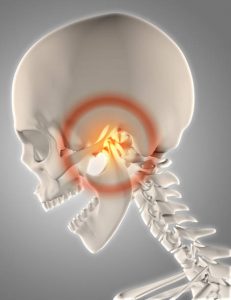How Physiotherapy Can Help Relieve Temporomandibular Joint Pain
Millions of individuals experience acute or chronic jaw pain, and it is one of the most common afflictions across North America.
What is TMJ Pain?
A TMJ disorder is when you suffer from pain in the temporomandibular joint in addition to the associated muscles, ligaments, and nerves around the joint. TMJ pain can also relate to referred pain from the neck to the upper jaw area where your jaw bone (mandible) meets the skull in front of your ear (temporal bone).
This joint disorder can cause you significant pain whenever you try to perform certain jaw movements or functions like chewing on a piece of food or speaking. Over time, this pain can often get worse when eating certain foods, stress, posture, and a variety of other factors.
Common Symptoms of TMJ Pain
A physiotherapist and qualified healthcare professional will work with you to identify and evaluate some of your symptoms. A clinical assessment from a Physiotherapist involves assessing jaw motion, bite, identifying deviations and abnormalities, identifying painful structures, and developing an individualized treatment plan based on your presentation.
A few of the most prevalent symptoms include:
- Pain while eating or chewing
- Headaches
- Clicking sounds
- Popping of the jaw when you open or close your mouth
- Locking of the jaw
- Radiating pain in the ear, jaw, face, and neck
- Limited range of motion in your jaw
- Changes in the way your jaw aligns
- Swelling and tenderness to your face
- Trouble speaking and opening the mouth

Actions That Contribute to TMJ Pain
Some potential actions that could influence your TMJ pain and TMJ symptoms include chronic stress, arthritis, trauma, oral habits, nutrition, and more.
Alleviate Your TMJ Pain
You don’t have to live with TMJ pain. Physiotherapy treatments typically involve addressing the contributing factors to your pain which include soft tissue work to symptomatic muscles, cervical mobilizations, manual therapy and exercises for the jaw, neck, and overall posture.
How Manual Therapy Can Help Relieve TMJ Pain
Manual therapy is a joint, muscle, and tissue manipulation designed to improve mobility through hands-on movements that is effective in improving musculoskeletal pain issues. Manual therapy is effective in providing benefits to the body through biomechanical as well as neurophysiological methods. Some of the most common ways in which manual therapy can help patients with their TMJ pain which includes but is not limited to:
- Improved mobility
- immediate relief in modification to pain processing sensors
- reduced inflammation
- reduced spinal pain sensitivity
- increased motivation of the sympathetic nervous system.



